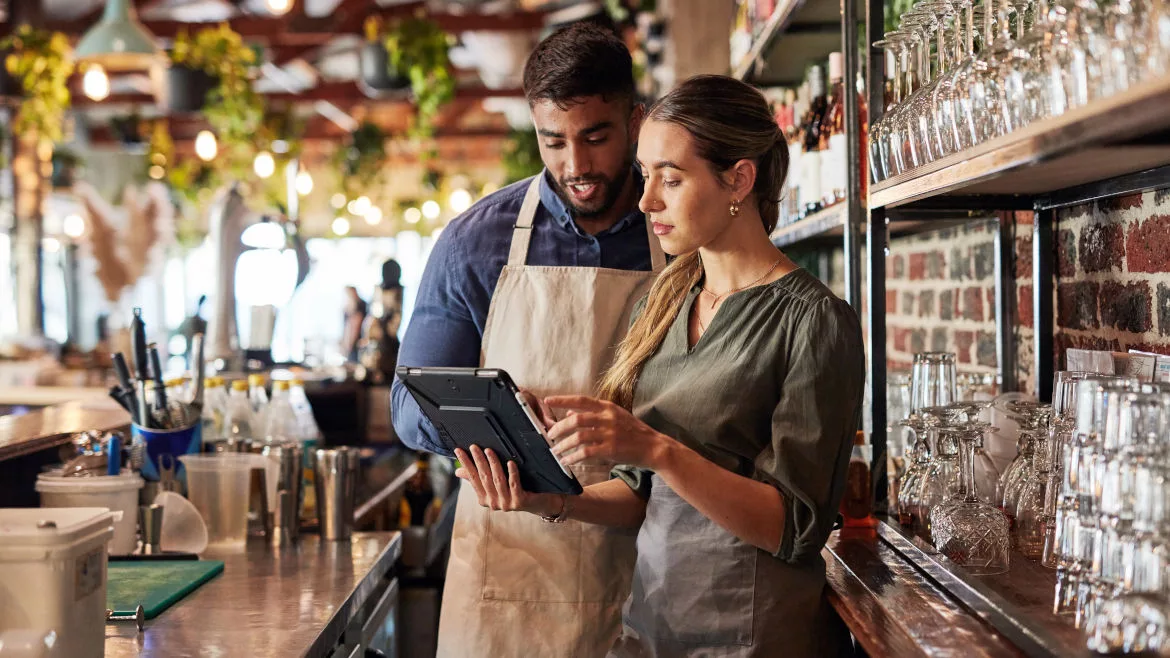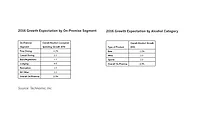On-premise operators see promise with alcohol deliver models
Inflation weighs on consumers’ on-premise dollars

Image courtesy of Getty Images
American publisher and writer William Feather is quoted for once having said, “A budget tells us what we can’t afford, but it doesn’t keep us from buying it.” Today, although inflationary pressures are influencing consumer behavior, experts note that resilience shines for the U.S. on-premise amid fluctuating trends.
According to recent BeverageTrak data from CGA by NIQ’s “On Premise Impact Report,” sales trends were up for the week ending Feb. 10, 2024.
“U.S. on-premise trends have been variable over recent weeks, with a dip of 4% in the week to Feb. 3, followed by growth of 6% in the most recent week,” the market research firm states. “Latest week trends have been driven by increases in both ticket count (plus 4%) and average check value (plus 1%) versus the previous week.”
Meanwhile, ticket counts were up 4% compared with 2023, while average check values were slightly down (1%) versus the same week last year, CGA by NIQ notes.
“The fluctuating trends in the U.S. on-premise reveal nuanced challenges for suppliers and businesses. Despite observing slightly negative daily trends leading up to Feb. 3… recent upticks offer a glimmer of optimism,” said Matt Crompton, regional director for North America at CGA by NIQ, in a statement. “The resilience demonstrated, notably evidenced by a promising surge on Saturday (plus 3%), highlights the industry’s ability to adapt in challenging circumstances, instilling a sense of cautious hope for suppliers navigating the dynamic landscape of on-premise.”
According to Boston-based Drizly’s fifth annual “Consumer Trend Report” inflation has impacted beer, wine and spirit purchases. Where consumers are drinking is changing — impacting on-premise, the company notes.
“Nearly one-in-four respondents said they will opt to drink at home more often in 2023 than at bars and restaurants, 26% plan to spend more on drinks for at home consumption this year versus on-premise, and one-in-five will be ‘self-bartending’ more in 2023 compared to 2022,” it states. “Notably, women may be feeling the burn of rising bar tabs more than men — nearly 60% of female respondents said that inflation has affected how often they go out to bars and restaurants compared to 50% of men.”
Carryout compromise
Although inflation concerns have impacted on-premise sales, operators are seeing consumers embrace off-premise consumption as delivery solutions proliferate.
In its “Elevating Off-Premise” report, San Francisco-based DoorDash notes that consumers are consistently gravitating toward the convenience associated with delivery, drive-thru and carryout solutions.
“According to Technomic’s long-term foodservice outlook, off-premise will rise from 54% of restaurant sales in 2023 to 61% of restaurant sales in 2030,” the report states. “This outlook is supported by optimism among foodservice operators, specifically about the future of restaurant delivery.
“Four in five operators expect their delivery businesses to grow over the next 12 months, and 75% of operators anticipate increased reliance on third-party delivery in the coming years,” it continues. “Advancements in areas such as convenience and alcohol delivery will increase the likelihood of a pronounced off-premise sales shift in foodservice over the next six years.”
Moreover, DoorDash reports that many restaurant operators maintain a belief that alcohol delivery through third-party platforms presents an opportunity for responsible growth.
“In fact, nearly four in five operators view this as a great way to drive revenue,” it states. “With alcoholic beverages being one of the most profitable categories in foodservice (given their traditionally high margins and long shelf life), these items can present a direct path to increasing profitability on third-party platforms.
“Consumer interest in alcohol delivery is also high, as nearly two in five say they’d be likely to purchase alcohol from restaurants if available on third-party platforms,” it continues. “Including alcohol items on delivery menus can also help restaurants stand out from competitors.”
As consumer trends continue to evolve, impacting the U.S. on-premise, it will be interesting to see how operators adapt and implement solutions going forward.
Looking for a reprint of this article?
From high-res PDFs to custom plaques, order your copy today!







